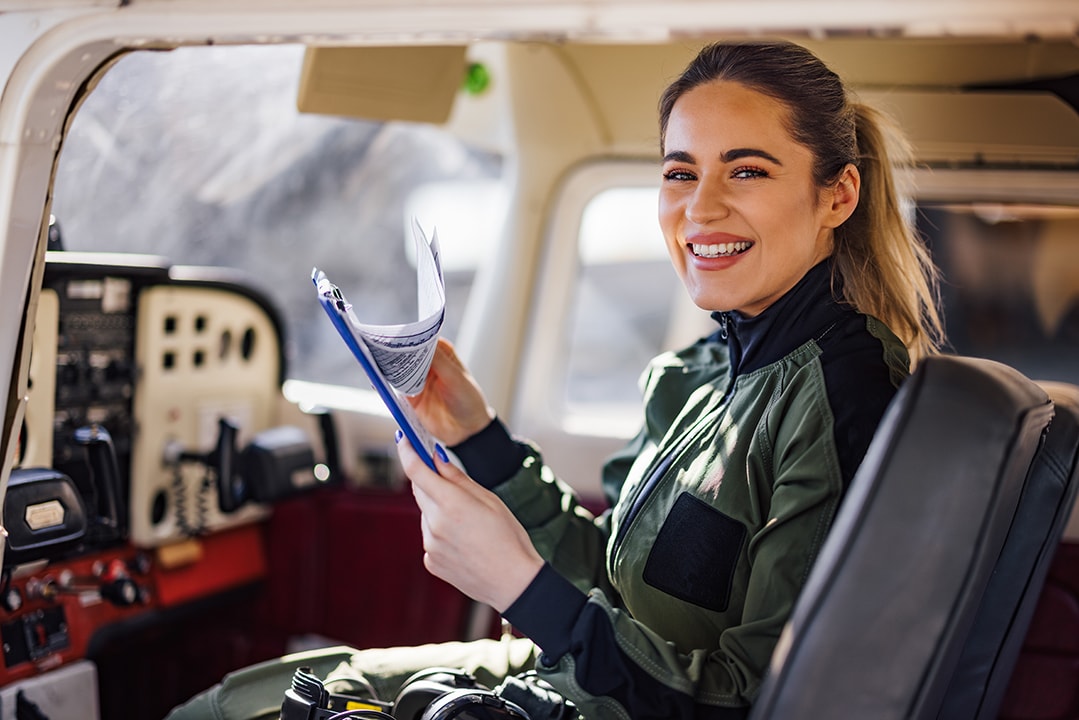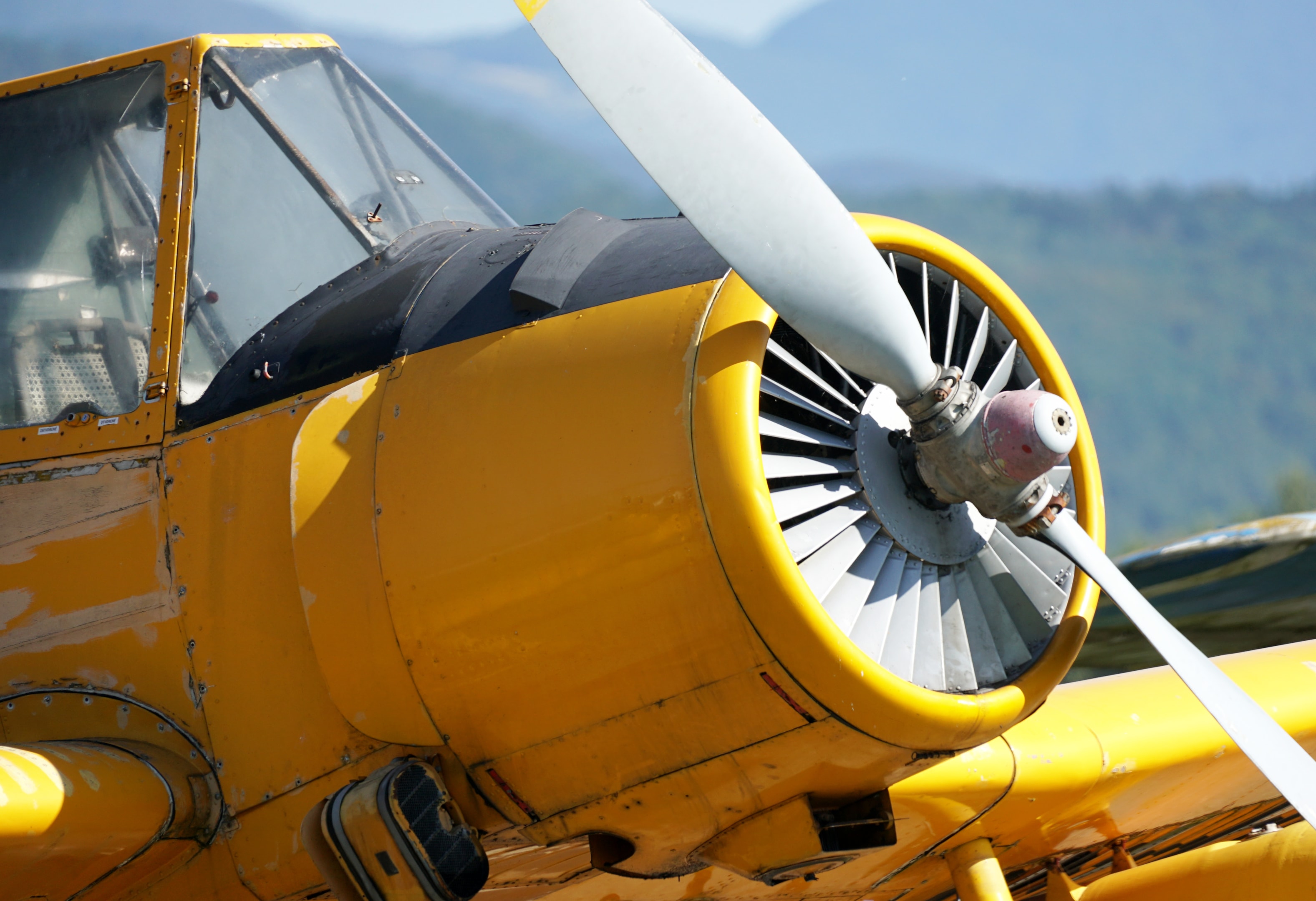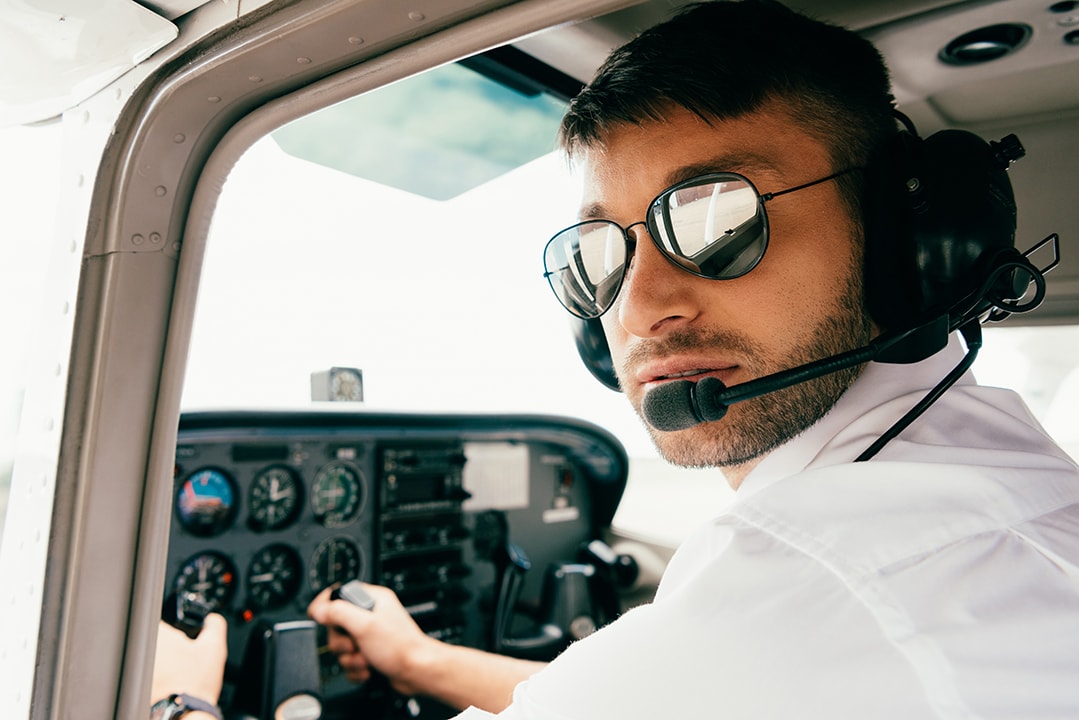Mastering the Sport Pilot Practical Test: Essential Tips and Insights
Oct 13, 2025
Ready to take to the skies? The sport pilot practical test is your gateway to flying light sport aircraft with confidence and safety.
Discover essential tips, certification requirements, and expert insights to help you ace the test and enjoy the freedom of flight. Keep reading to master every step toward becoming a certified sport pilot!
Preparing for the Sport Pilot Practical Test: Certification Essentials
The sport pilot certificate carries specific privileges and limitations designed for pilots operating light sport aircraft, which are smaller, lighter, and simpler than traditional aircraft.
To obtain this certificate, applicants must meet eligibility requirements, including holding a valid airman medical certificate or qualifying to use a current and valid U.S. driver’s license in lieu of a medical certificate. A U.S. driver's license can be used as a substitute for an FAA medical certificate under certain conditions, provided the individual meets all regulatory requirements.
It is important to note that a recently issued medical certificate is required for initial certification, and if a medical certificate withdrawn, suspended, or revoked, the individual may lose eligibility to operate as a sport pilot.
In such cases, a person must be found eligible by the authorities to continue operating a light-sport aircraft. Moreover, individuals who do not meet the required medical standards due to an existing medical condition are not permitted to operate a light-sport aircraft unless they can do so safely.
These medical requirements ensure that pilots are physically and mentally fit to operate light sport aircraft safely, promoting overall aviation safety.
Sport pilot privileges primarily allow flying for recreational purposes and personal enjoyment, but they strictly prohibit flying for compensation or hire. This means sport pilots cannot carry passengers or property for payment, nor can they operate aircraft in furtherance of a business.
Additionally, sport pilots must comply with specific operational limitations, such as restrictions on flying at night, in controlled airspace without proper endorsements, or carrying more than one passenger.
Pilots must also comply with any judicial or administrative order, including any administrative order applying to their operation, and must adhere to any limitation imposed on their certificate or privileges.
Unlike the recreational pilot certificate, which offers a different set of privileges and training requirements, understanding these certification essentials, including the medical and operational requirements, is crucial for anyone preparing for the sport pilot practical test, as well as the Sport Pilot Written Test, as it ensures they meet FAA standards and can safely enjoy flying light sport aircraft within the defined privileges and limitations.
Operational Environments
Sport pilots need to have a comprehensive understanding of the various operational environments where they will be flying, especially when it involves airports with operational control towers.
Certain procedures and requirements apply depending on the airport located within specific airspace classifications, such as Class B, C, or D. These airports require pilots to be proficient in communication with air traffic control (ATC) and to understand the specific procedures for entering, operating within, and exiting controlled airspace.
This knowledge is essential not only for safety but also to comply with FAA regulations that govern light sport aircraft operations.
The sport pilot practical test rigorously evaluates a pilot’s ability to demonstrate these skills in real-world scenarios, ensuring they can safely navigate complex environments such as Class D airspace, where coordination with ATC is mandatory.
In addition to controlled airports, sport pilots must be familiar with flying in various types of airspace, including Class B, C, and D airspace, as well as uncontrolled airspace.
Understanding the use of visual references and navigation tools is critical for maintaining situational awareness and safe flight operations. This includes evaluating weather conditions and ensuring that flight or surface visibility meets minimum VFR requirements before and during each flight.
Pilots must be able to interpret aeronautical charts, utilize GPS and other navigation systems, and make sound decisions based on weather and air traffic conditions.
This operational knowledge, combined with practical skills, forms the foundation for passing the sport pilot practical test and for safe, responsible flying in diverse environments.
Staying current with these operational requirements also helps sport pilots meet ICAO standards and FAA regulations, ensuring their continued eligibility to operate light sport aircraft safely and legally.
Practical Test Preparation

Preparing for the sport pilot practical test involves a combination of thorough flight training and comprehensive ground training focused on the applicable aeronautical knowledge areas.
This preparation ensures that pilots are well-versed in essential topics such as weather interpretation, navigation techniques, FAA regulations, and aircraft operations relevant to light sport aircraft.
Many aspiring pilots often compare popular training options like King Schools vs Sporty’s to choose the best resource for their ground study before taking the practical test. Before taking the practical test, pilots must satisfy all training requirements, including both ground and flight instruction, as specified by the FAA.
Ground training is typically conducted with an authorized instructor or through a structured home-study course, providing the foundational knowledge required to pass the knowledge test.
Flight training complements this by offering hands-on experience, allowing pilots to develop and refine their skills in real-world scenarios.
This dual approach helps pilots build confidence and competence, which are critical for successfully completing the sport pilot practical test in 2025.
An important component of practical test preparation is the solo cross-country flight, which demonstrates a pilot’s ability to plan and execute a flight independently, navigating between airports located at a considerable distance apart.
The solo cross-country must be completed in accordance with FAA requirements. Additionally, the pilot must have flown the required minimum hours and types of flights before being eligible for the practical test.
Throughout the preparation process, pilots must also meet specific flight proficiency requirements, including the ability to perform safe takeoffs, landings, and maneuvers, as well as effective communication and navigation.
Utilizing checklists and other practical tools during training can greatly enhance organization and safety, helping pilots to methodically prepare for the test day.
By focusing on these key areas, aspiring sport pilots can ensure they meet FAA standards and are ready to demonstrate their skills confidently during the practical test.
Flight Proficiency Requirements
The flight proficiency requirements for obtaining a sport pilot certificate are designed to ensure that pilots can operate light sport aircraft safely and competently.
Applicants must demonstrate the ability to perform essential maneuvers such as takeoffs, landings, go-arounds, and emergency procedures with precision and confidence.
In addition to these fundamental skills, pilots must show proficiency in navigation, communication with air traffic control, and managing the aircraft’s performance under various conditions. Proficiency must be demonstrated in the specific category and class ratings, such as airplane, for which the pilot seeks privileges.
This includes understanding how to handle different weather scenarios and airspace classifications, which are critical for safe flight operations. Meeting these flight proficiency requirements is a key component of the sport pilot practical test, reflecting the FAA’s commitment to maintaining high safety standards for sport pilots in 2025.
While the sport pilot certificate focuses on recreational flying and requires less training than a private pilot certificate, it still demands a solid foundation of flight skills and knowledge. Unlike the private pilot certificate, which involves more extensive training and broader privileges, the sport pilot certificate limits pilots to flying light sport aircraft under specific conditions.
Sport pilot certificates do not include category and class ratings on the certificate itself; instead, these are documented through logbook endorsements for the specific aircraft category and class. A flight review must be performed in an aircraft for which the pilot holds the appropriate class rating. Obtaining additional class ratings typically requires only a logbook endorsement from an authorized instructor.
It is important to note that the use of a motor vehicle or any other device to assist in flight operations is strictly prohibited, emphasizing the need for hands-on piloting skills.
By mastering these proficiency requirements, sport pilots not only comply with FAA regulations but also ensure they are prepared to fly safely and responsibly, making the most of their sport pilot privileges while adhering to operational limitations.
Aeronautical Knowledge

Aeronautical knowledge is a fundamental pillar for sport pilots, encompassing a broad range of topics essential for safe and competent flying. This includes understanding weather patterns and how they affect flight, navigation techniques such as pilotage and dead reckoning, and the regulations that govern light sport aircraft operation.
Sport pilot certificates are governed by specific FAA rules and are distinct from recreational and private pilot certificates. When operating most light-sport aircraft, it is important to note that these aircraft do not have a type certificate, but instead comply with ASTM standards.
Mastery of these areas ensures that pilots can make informed decisions during flight, anticipate and respond to changing conditions, and comply with FAA rules.
The sport pilot practical test standards emphasize the demonstration of this knowledge, requiring applicants to show proficiency in areas like airspace classification, aircraft performance, and emergency procedures. Staying current with this knowledge is vital, especially as regulations and best practices evolve into 2025.
Additionally, sport pilots must be familiar with operational concepts such as prior authorization for certain airspace, and the financial responsibilities involved in flying, including airport expenses and operating expenses.
The costs covered are limited to fuel, oil, airport charges, or aircraft rental fees, and sport pilots are permitted to split these expenses only with their passengers. Sport pilots must also meet ICAO requirements when operating internationally or in certain controlled airspace. Understanding these factors helps pilots manage their flights efficiently and within legal boundaries.
It is important to note that while a valid U.S. driver’s license can be used by some pilots in place of an FAA medical certificate, it cannot serve as a form of identification during the sport pilot practical test or other official aviation processes.
This distinction underscores the importance of proper documentation and adherence to FAA requirements. By thoroughly preparing in these aeronautical knowledge areas, aspiring sport pilots can confidently approach the practical test and ensure safe, responsible operation of light sport aircraft.
D Airspace Operations
Operating within Class D airspace requires pilots to have specific training and experience to navigate safely and comply with FAA regulations. Class D airspace typically surrounds smaller airports with an operational control tower, where pilots must communicate effectively with air traffic control (ATC) to receive clearance for entry, departures, and landings.
Understanding the unique procedures, such as maintaining two-way radio communication and adhering to ATC instructions, is essential for safe operations. Pilots must also be proficient in using visual references and navigation tools, including aeronautical charts and GPS systems, to maintain situational awareness and ensure compliance with airspace boundaries.
It is especially important to maintain visual reference to the surface during operations in Class D airspace, as required for safe flight and regulatory compliance.
Mastery of these skills is a critical part of the sport pilot practical test and is necessary for pilots seeking to operate light sport aircraft within controlled airspace environments in 2025.
Additionally, pilots must be knowledgeable about recent authorization requirements and administrative orders that may affect their ability to operate in Class D airspace. Any administrative order affecting a pilot's eligibility must be strictly followed when operating in Class D airspace.
This includes understanding the impact of any medical conditions or special issuance medical certificates on their certification status, ensuring they meet all FAA health and safety standards. Pilots with certain medical conditions may require a special issuance medical certificate to operate in controlled airspace.
Proper comprehension of these regulatory elements helps pilots avoid violations that could result in penalties or loss of privileges.
By combining thorough training, effective communication, and adherence to medical and administrative regulations, sport pilots can confidently and safely operate in Class D airspace, meeting the FAA’s standards and enhancing overall aviation safety.
These competencies are vital for passing the sport pilot practical test and for maintaining ongoing proficiency in diverse flight environments.
Test-Day Strategies

Preparing for the sport pilot practical test requires more than just technical skills; it also demands a strategic approach on test day to ensure success. Arriving early is crucial, as it allows pilots to acclimate to the testing environment, review any last-minute notes, and mentally prepare without feeling rushed.
Being thoroughly prepared means having all necessary documents ready, such as your pilot certificate, medical certificate or valid U.S. driver’s license, logbook endorsements, and identification. A logbook endorsement from an authorized instructor is required to verify that you have met the necessary aeronautical knowledge and flight proficiency requirements and are ready for the practical test.
Staying focused throughout the test is essential, as the examiner will assess both your aeronautical knowledge and flight proficiency. The examiner may ask about the roles and responsibilities of a pilot flight crewmember, so be prepared to discuss these distinctions. Certain operations may require more than one pilot, and you should be ready to explain scenarios where this is necessary. Additionally, the ability to read, speak, write, and understand English is a requirement for obtaining a sport pilot certificate.
Understanding key concepts like prior authorization for certain airspace and managing airport expenses is important, as these are often part of the practical scenarios you may encounter during the test. Utilizing a checklist or other organizational tools can help maintain focus and ensure no critical steps are overlooked during the evaluation.
On test day, demonstrating comprehensive aeronautical knowledge and flight proficiency is paramount. This includes showing competency in takeoff and landing procedures, navigation, communication with air traffic control, and adherence to FAA regulations specific to light sport aircraft.
Pilots should be ready to explain their decision-making processes, especially regarding safety and operational limitations, such as restrictions on passenger carrying airlift sponsored flights or operating in controlled airspace without proper endorsements.
Staying calm and confident while responding to examiner questions and performing maneuvers will help convey your readiness to safely operate as a sport pilot. Remember, the sport pilot certificate carries privileges designed for recreational flying with specific limits, so showcasing your understanding of these boundaries alongside your flying skills will be key to passing the sport pilot practical test in 2025.
Post-Test Procedures
After successfully completing the sport pilot practical test, pilots must complete several important post-test procedures to finalize their certification. This includes submitting any required paperwork and ensuring all documentation is accurate and complete for the issuance of the sport pilot certificate.
For those seeking to operate a different type or class of light-sport aircraft, obtaining privileges in an additional category requires following the FAA process, which involves receiving proper endorsements from an authorized instructor and complying with all relevant FAA regulations, without the need for a full checkride.
It is essential that pilots understand the concept of a recent application, which refers to the timeframe within which the application for certification must be submitted and processed according to FAA regulations. Compliance with current flight regulations is also mandatory to maintain certification validity.
These steps ensure that the pilot’s credentials are officially recognized and that they meet all legal and safety standards set forth by the FAA for operating light sport aircraft.
Additionally, the use of a full-stop landing during training and testing remains a crucial skill for sport pilots, as it demonstrates proper control and adherence to safe landing procedures.
Pilots must also continue to demonstrate comprehensive aeronautical knowledge and flight proficiency, which are critical not only for initial certification but also for ongoing proficiency and safe operation of light sport aircraft.
This includes understanding operational limits, airspace regulations, and the privileges and restrictions associated with the sport pilot certificate.
Staying current with these requirements and maintaining a high level of skill ensures that pilots can confidently operate within the defined boundaries of sport pilot privileges, promoting safety and compliance in 2025 and beyond.
